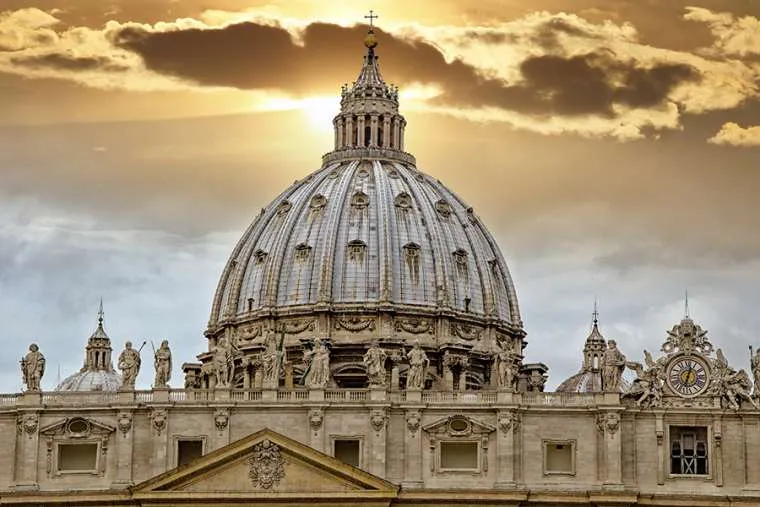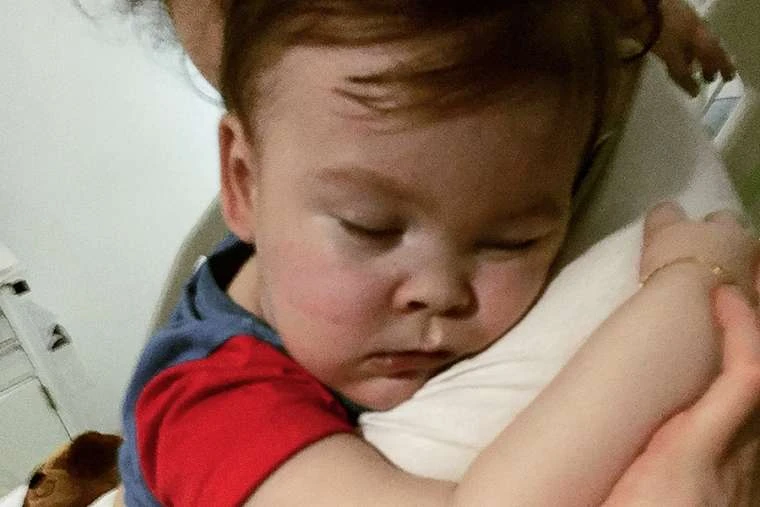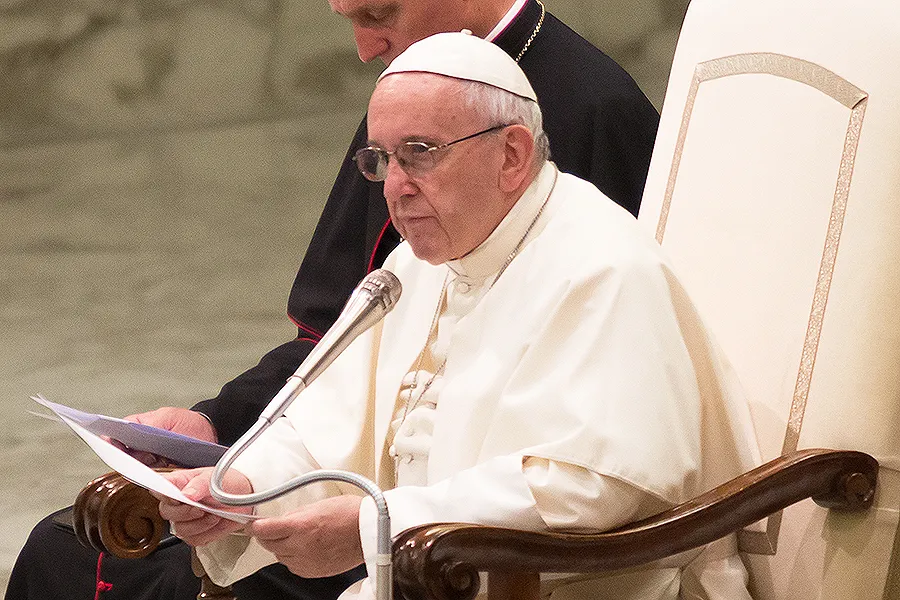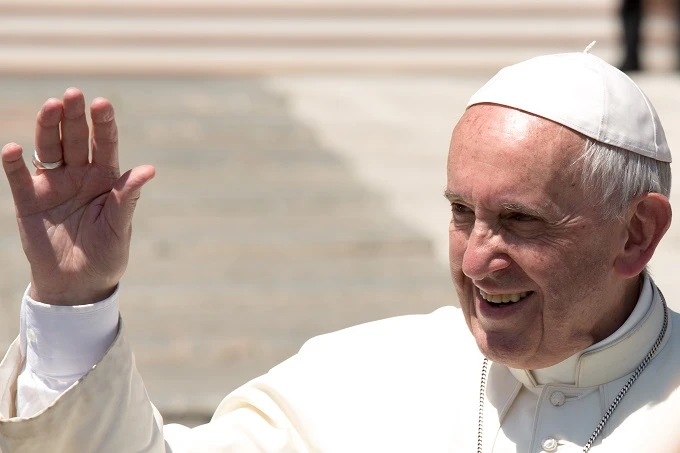
Vatican City, Apr 27, 2018 / 06:20 am (CNA/EWTN News).- The Vatican’s annual financial report this year showed that monitoring systems put into place nearly five years ago continue to be effective, however, there is still room to grow in terms of prosecution for questionable activities.
In comments to journalists during a May 27 press briefing, Rene Bruelhart, president of the Vatican’s Financial Intelligence Authority (AIF), said the report for 2017 shows “a clear commitment from our side to continue to report in the most transparent way possible on our activities.”
Two keywords that can sum up the AIF activities for 2017, he said, are “consolidation and normalization,” particularly in terms of implementing a sustainable regulatory and reporting system, as well as growing relations with domestic and international bodies.
Bruelhart, a Swiss lawyer, was tapped to head the AIF after it was established by Benedict XVI in 2010 to supervise the Vatican’s financial activity and prevent and counter money laundering.
Carried forward under Francis, the AIF works alongside other financial entities in the Vatican, such as the Secretariat for the Economy and the Council for the Economy, both of which were established by Pope Francis as part of his ongoing reform of the Roman Curia.
With full autonomy the AIF also monitors and reviews actions carried out by the Administration of the Patrimony of the Holy See (APSA), which oversees the Vatican’s real estate, and the Institute for the Works of Religion (IOR), more often referred to as the “Vatican bank.”
Bruelhart was present alongside AIF director Tommaso Di Ruzza at a May 27 press briefing on the AIF’s 6th annual report, which covered 2017 and summed up their continued efforts to build relationships with other states and crack down on suspicious financial activity within the Vatican.
Most notably, the report detailed that it was the AIF which first flagged the diversion of significant funds from the Vatican’s Bambino Gesu Children’s hospital to renovate Cardinal Tarcisio Bertone’s apartment in Rome.
The case exploded in the media, and in October 2017 the former president of the hospital, Giuseppe Profiti, and former treasurer, Massimo Spina, were been charged with the illicit use of hospital funds in the amount of 422,005.16 euros ($480,600.58) to refurbish the flat.
In total for 2017, 150 Suspicious Activity Reports (SARs) were filed with the AIF, compared to last year’s 207. The reason for the decrease, according to AIF Director Tommaso Di Ruzza, is that the quality of the entity’s reporting system has improved, “showing a growing awareness and strengthening of the control functions of the reporting subjects.”
Of the 150 flagged transactions, 8 were submitted by the AIF to the Vatican Office of the Promoter of Justice during 2017, of which nearly all involved potential financial crimes with foreign individuals or entities either within or in connection with a foreign jurisdiction.
The potential crimes flagged include international fraud, including fiscal fraud and market abuse.
In only one case did the Vatican tribunal freeze an account after a questionable cross-border transaction amounting to roughly 1,757 euro, or $2,122, which took place in 2016, which the AIF said it had flagged and submitted in 2015.
According to the report, none of the activities or transactions reported in 2017 were related to terrorism.
Since 2015, the AIF has presented some 54 reports to the Promoter of Justice. When asked why there has not been a higher number of cases prosecuted in the Vatican courts, which in the past has been identified as an area of weakness, Bruelhart said it will take time to adequately develop the system put into place, and is up to the Promoter of Justice to determine how to act on reports submitted by the AIF.
It is unclear how many of the 54 transactions flagged and sent to the Promoter of Justice have been looked into or investigated. However, “it’s important to remember where we’re coming form,” Bruelhart said, noting that the current system has been built only within the past 5-6 years, and new entities have been established, including the secretariat and council for the economy.
“It has been a new world” for the Promoter of Justice, he said, adding that in his view, the chain of activities that has taken place “has moved in the right direction” and “a lot of progress” has been made.
Noting how the first conviction took place just last year, he said “work is ongoing” in this area, and he expects to see more progress in the future.
“There is a very good dialogue with the office of the promoter of justice,” he said, adding that “it’s about building a dialogue together,” but ultimately the office is the only one responsible for what they decide to do.
Responding to criticism that the Vatican’s financial reform has made little progress, Bruelhart pointed to all the steps that have been taken so far in the past six years, saying if each of them are broken down, one can see that “a lot has been done in a very very short amount of time.”
Change, he said, takes time and at times one needs to take a step back to fully appreciate the progress and continue to go forward. “Its a process, but there is life in this process,” he said.
In addition, the AIF in 2017 also cracked down on transparency and accountability for donations made for institutional and charitable purposes, as well as interactions with what they have dubbed “high risk states” which do not have proper monitoring systems in place.
The crack down on transactions for charity and donations comes after a law was introduced Nov. 22, 2017, on the “Registration and Supervision of Non-Profit Organizations.”
The AIF also signed an additional 19 Memoranda of Understanding (MoU) with foreign counterparts, bringing the bringing the number to 57, and exchanged information in some 282 cases.
In an April 27 press release on the AIF report, Di Ruzza stressed the importance of these relations, saying that “considering the potential risks linked to the universal projection of the Holy See, international cooperation is pivotal.”
These type of cross-border agreements are designed to crack down on money laundering and tax evasion, ensuring that the IOR does not become a tax haven.
 […]
[…]







